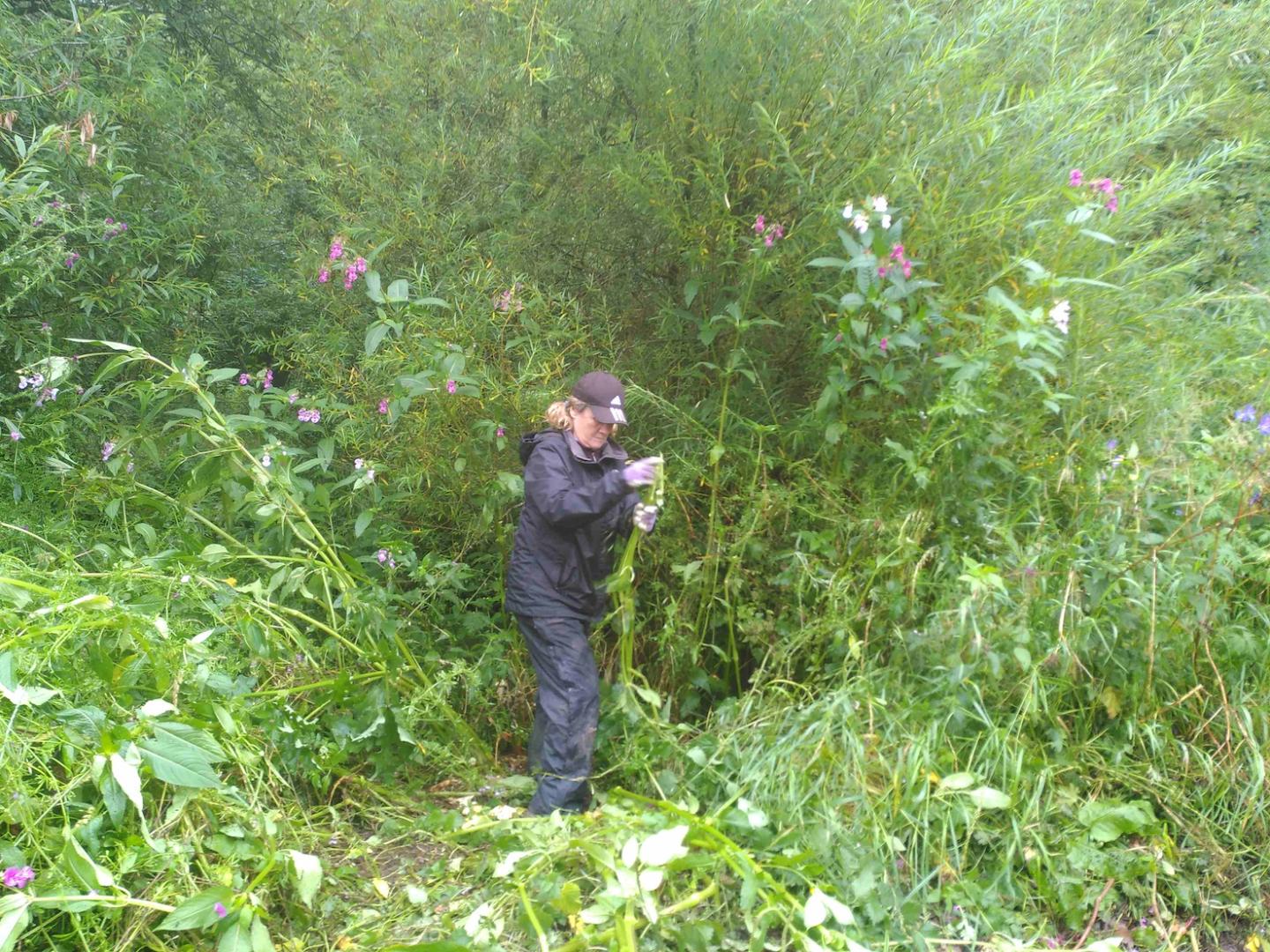The fightback against Himalayan Balsam is underway in Holmedale, says Martha McBarronTHE letters from Geoff Milburn and Gerald Blake to the Teesdale Mercury prompted an overdue update on efforts in Holmedale to address the problem of invasive Himalayan balsam.
The Holmedale Nature Network was initially set up to connect communities from Barningham to Whashton to work on improvements to our natural environment and biodiversity.
We have now expanded to include Gilling West, Aske and Skeeby, thus encompassing all of the parishes around the Holmedale watercourse which originates on the west side of Barningham and runs to the Swale.
As this was our first volunteer season, it has been a big challenge to understand the extent of the balsam spread and devise the most effective strategy for reversing it in our area.
Fortunately, we have been well supported by Jenny Lee, volunteering and engagement officer at the Yorkshire Dales Rivers Trust (YDRT).
Himalayan Balsam stands up to seven feet high and once attuned, you start noticing it everywhere, crowding out our native species and reducing biodiversity.
Each plant can produce up to 2,500 seeds and the ripe seed pods burst explosively, allowing the seeds to spread up to 7m from the plant.
It is also an annual plant, dying back in the winter, which results in erosion of river banks. For both mapping and removal, it is essential to engage with landowners and the Holmedale Nature Network was very successful in gaining good co-operation with the Ministry of Defence, in Dalton, and consequently, managed to map and clear balsam from an 800m stretch of the Scar Beck and affected tributary during June and July.
North Yorkshire Council also provided a significant boost to our efforts by mowing an extensive area of verge along the road to the local reservoir, which was heavily overgrown with balsam and too large an area for volunteers to work on.
Nearly 40 volunteers helped out over the summer with our balsam pulling sessions in Dalton, Newsham, Ravensworth, Whashton and Gilling West, contributing more than 160 hours of their time to the effort.
A number of volunteers did additional pulling on their own when they had an hour or two to spare. Many found it quite enjoyable.
Unfortunately, not all locations were easy to work in. Nettles often presented a hazard, while insects, weather and terrain could be challenging.
It will never be possible to remove all of the balsam but it should be possible to bring it under control as the seeds are only viable for a year or two. We expect to see a big improvement in the pull areas next season which we will re-visit to continue the management effort.
Our main strategy for the first season was to focus on a 5-10m corridor around the watercourses in the upper part of the watercourse, such as in Newsham and Dalton.
The aim was to reduce transmission of balsam seeds downstream, following the top of the catchment down approach as recommended by the rivers trusts.
We also ran pulling sessions at road bridges over the watercourse in Whashton and Gilling West, which are downstream and will continue to be affected until the upper catchment is cleared. Removing balsam at these locations is useful as it reduces further spread resulting from vehicles and walkers. It also provided a way of engaging with local residents and building our volunteer network.
I’ve often asked volunteers how many plants they think they’ve pulled in an hour, which usually elicits a laugh. The answer certainly depends on the concentration of plants and the nature of terrain being worked on. However, if we assumed an average of 250 per hour, that would give us a total of about 40,000 removed, a phenomenal number. (That figure doesn’t include the half mile of verge that was mowed by Yorkshire County Council in Dalton, which took out perhaps as many again. Hard to estimate.)
We stopped pulling balsam at the end of July when seed pods were starting to ripen and there is risk of spreading the problem further.
So what’s next? We’re continuing survey work to fill in gaps on the extent of the spread – this can carry on for the next few months until the balsam dies back and can no longer be seen. From this information, we will develop our pulling strategy for 2025.
We have a number of large areas that will require considerable manpower to tackle. The plan for these is to engage with corporate groups looking for volunteer days.
The scale of the challenging is truly daunting, but we’ve made a start.




